1,200 years ago in the heart of Java, Buddhism and Hinduism grew as the dominant religions of the people, signified by the construction of a multitude of temples in the island’s mountainous regions as well as the vast plains overlooked by mighty volcanoes. Around the center of power of Medang – at that time the most important kingdom in central Java – in the southern part of the island, impressive Buddhist temples were commissioned, with new shrines more imposing than the old ones. Tarabhavanam (known as Kalasan today), Manjusrigrha (present day Sewu), and Borobudur were among the most prominent temples built under the Buddhist rulers of Medang.
Meanwhile, the Hindus who saw their influence weakened focused on constructing temples in the northern highlands of central Java. Gedong Songo, built on the slopes of Mount Ungaran, is a group of nine small shrines of which five have been successfully restored. With the backdrop of Mount Sumbing and Sindoro (Sundoro), among the most iconic volcanoes in Java, Gedong Songo was a sanctuary for the Hindus for decades before they regained their authority over the royal court of Medang, symbolized by the completion of Shivagrha (modern day Prambanan), a Hindu temple built to rival the grandeur of Borobudur.
Less known to most people today, another group of temples sits amid rice paddies in a lush valley, not too far from Gedong Songo. Constructed at around the same period as Gedong Songo, Candi Ngempon (Ngempon temple), as the compound is now called, was only rediscovered by a local farmer in 1952. One day he went to the fields with his grandfather and hoed the soil to prepare for another rice planting season. As he dug deeper, he hit solid rock which turned out to be andesite, a type of volcanic rock often used to build ancient Hindu and Buddhist temples in Java. The more he dug, the more he unearthed, from pieces of square andesite stones, to statues of Hindu deities and decorative reliefs.
In the same year, the national archaeological agency conducted reconstruction work and managed to restore three temples. The statues of Durga, Ganesha and Nandi – all suggestive of Shaivism which was the main Hindu tradition in eighth-century Java – found around the temple compound are now safely kept in Museum Ranggawarsita, the main museum of Central Java. In 2006, another structure was successfully restored to resemble much of its original look 1,200 years ago. But there are still five shrines that remain in ruins due to the lack of original stones to rebuild them.
Further studies suggest that Ngempon was once used as a center of education for literature and spiritual studies, as well as a place to train selected people to become masters in kanuragan, a supernatural power which makes the person who possesses it invincible. Its location by a river, considered to have high energy in local beliefs, probably contributed to Ngempon’s significance in the past. But today it is just a sleepy, secluded temple compound within a fenced enclosure which is only opened for several hours a day. A visit to these lesser known sisters of Gedong Songo makes me wonder how many more ancient temples there are in Java that have yet to be discovered, buried deep in the hills and valleys, waiting to see the day when the sun shines on their centuries-old stones once again.






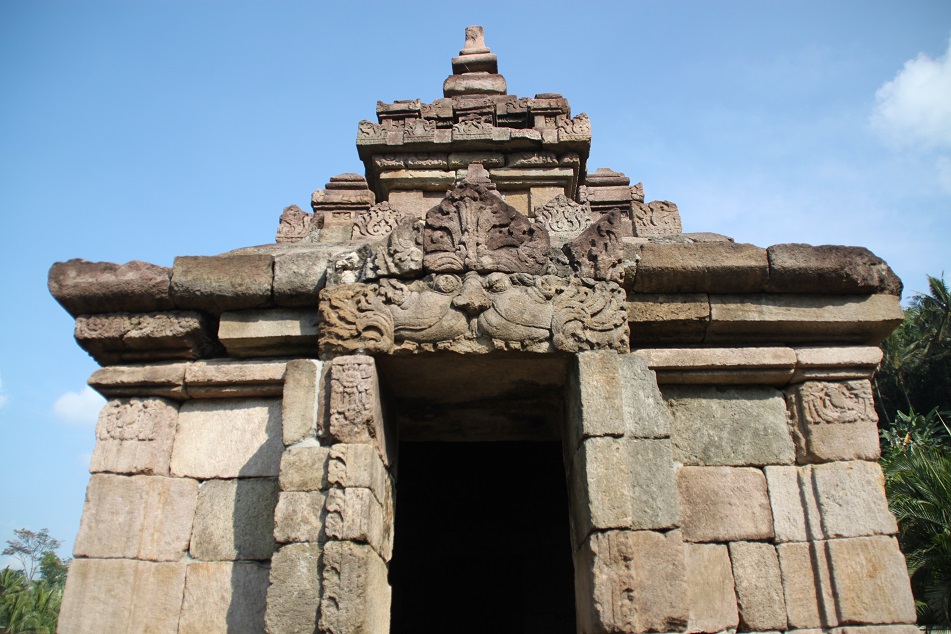

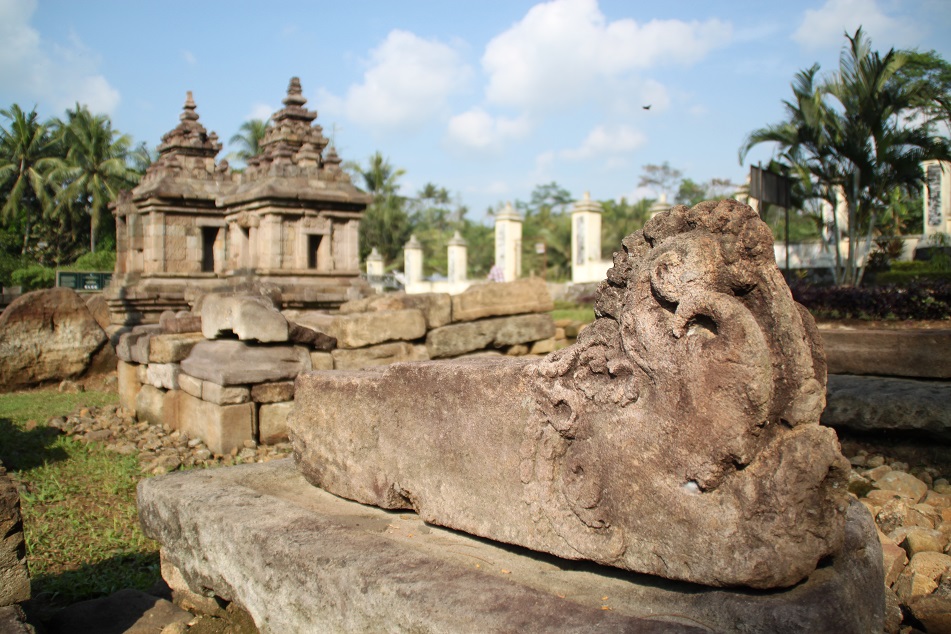


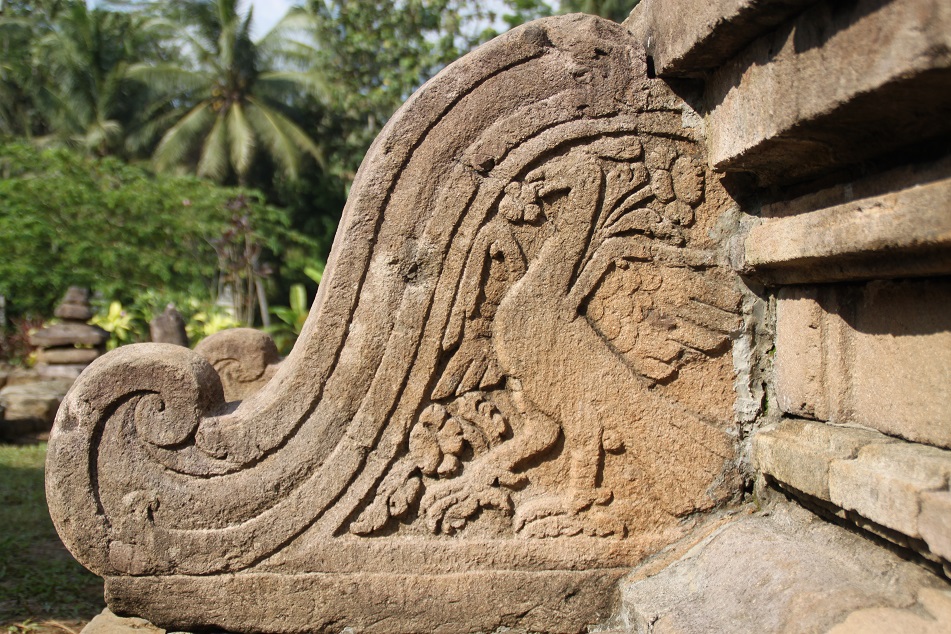
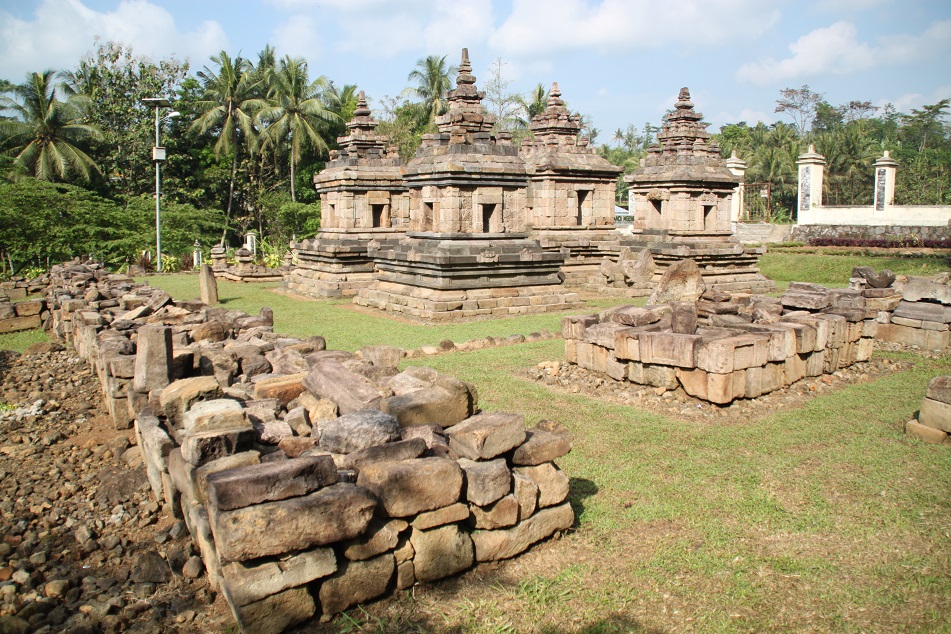
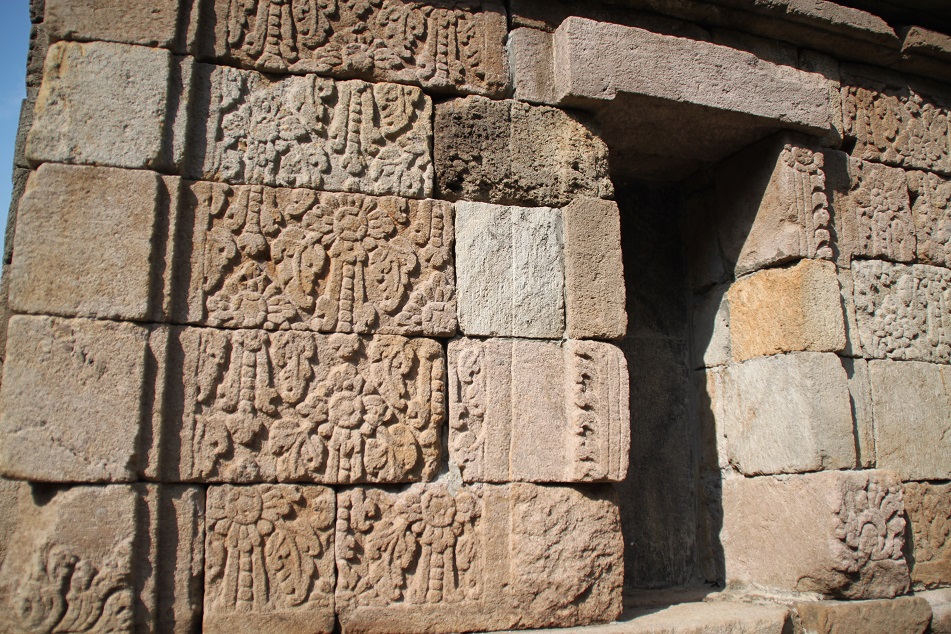


these are well preserved….. is this also open to tourists?
LikeLike
Hi Dex. Yes, it is. Officially it opens at 8am, but since this is off the radar of most tourists, the caretaker comes whenever he wants — sometimes a bit later than 8.
LikeLike
Love the dragonfly pic!
LikeLike
Thanks Emma & Matt! I took that photo while waiting for the caretaker to come and open the lock to the temple compound.
LikeLike
Looks like an incredible place!
LikeLike
Candi Ngempon is not the biggest or most ornate ancient temple in Java. But what I loved the most about it was its secluded location and the fact that there were only a handful of other visitors when I was there. Thanks for dropping by!
LikeLiked by 1 person
Imagine a farmer off to a routine day in the field and unearthing a treasure of history. Wow. Fabulous photos Bama. Love the detail and so well preserved.
LikeLike
A lot of smaller ancient temples in Indonesia were discovered this way since volcanic eruptions and earthquakes that occurred over the course of centuries buried them in thick layers of soil. In a way I envy those farmers for unearthing such important vestiges from the past. 🙂 Thanks Sue!
LikeLiked by 1 person
What a find! I can imagine the excitement the farmer must have felt.
LikeLiked by 1 person
In a deeply superstitious society like in many parts of Indonesia, I wonder if apart from excitement, those farmers who discovered fragments of ancient temples in the ground also felt concerned for they saw it as an omen.
LikeLiked by 2 people
Given the location, this temple is kind of unique, because it’s location is near a river. Most of other Hindu temples are located on a mountain slope. Prambanan also located near a river, and I think it’s not just a coincidence.
There are also hot springs near Ngempon. I haven’t visited the springs yet, but a friend said that the hot springs are from Ancient Mataram era. We can’t conclude anything, though, as the springs have been renovated so the old stones are most likely changed during reconstruction.
In modern Balinese, “ngempon” means “to take care of”. I think that quite resemble Ngempon as the training place for soldiers at that time. Hehe.
Ooh I do love the birds!
LikeLiked by 1 person
Nice to hear your perspective and thoughts about this temple, Master Gara! 🙂 I did visit one of the hot springs, although it didn’t really look inviting for there were far too many people in such a small pool. And as you said, it didn’t look ancient at all.
It’s interesting to study the etymology of the word ngempon. I guess the Balinese word you mentioned has the same root with “ampu”, which forms the term “pengampu” — a person who takes care of someone (usually a customer in banking terminology). However, from what I read the temple was named ngempon from “empu”, or master. The lack of inscriptions mentioning about this temple means we can never know what this compound was once called. The birds are probably my favorite part of Candi Ngempon. 🙂
Thanks for reading and sharing, Gara!
LikeLike
Very interesting Bama. How amazing it must be to live in a country that has thousands of years of history and temples are buried under rice fields. If we dig down we go through the layers and layers of history. Lovely photographs.
Alison
LikeLike
It never ceases to fascinate me to think of those ancient structures we have yet to discover beneath our feet. The problem is, with a growing population, more and more lands are now turned into houses, making archaeological excavations almost impossible. However, what people have unearthed and reconstructed so far are nothing short of amazing! Thanks Alison!
LikeLiked by 1 person
I especially like the dragonfly!
LikeLike
Thanks to that caretaker who came late I had a lot of time to take photos of the temple’s surrounding, including that lovely dragonfly.
LikeLiked by 1 person
How often I wonder did a farmer unearth cultural treasures when digging his field? Thank you for another interesting post, my friend!
LikeLiked by 1 person
On the islands of Java and Sumatra it’s not that rare at all, although for sure it doesn’t happen in a daily basis either. It must have been an unforgettable day for that farmer who discovered pieces of this temple! Thanks Peter!
LikeLiked by 2 people
Another great post!
LikeLiked by 1 person
Much appreciated, John & Susan!
LikeLiked by 1 person
Looks like an incredible place!
LikeLike
It’s not as impressive as Borobudur or Prambanan, for sure. But to think that this temple compound has been around for more than a thousand years is absolutely amazing!
LikeLike
This is such a great post! I am a Hindu. Ancient temples and shrines are always intriguing to me. I hope to travel places like this in the distant future. Until then, I will be visiting and exploring via your blog posts. 🙂
LikeLiked by 1 person
Thanks Sulo! Even though I myself am not a Hindu, I’m always captivated by ancient Hindu temples across Southeast and South Asia. I wonder if my father’s penchant for Mahabharata and Ramayana helped me grow my fascination toward those temples. Really appreciate your time reading my blog!
LikeLiked by 1 person
Fab ur posts
LikeLike
Thanks! Glad you enjoyed my posts.
LikeLike
Amazing blog. the picture of the dew in the grass and that one of the dragonfly was really good. It is a good way to read a little bit of temple history.
LikeLike
Thank you! I’m glad I was patient enough to wait for the caretaker of this temple compound to open the lock, so I had enough time to take photos of the rice paddies, the river, and that dragonfly.
LikeLike
It is quite good to hear
That we know how cherish
Something of twelve-hundred years 🙂
LikeLike
This temple compound has been around far longer than many things we have visited or seen, so I think cherishing it is just the right thing to do. 🙂 Thanks for dropping by!
LikeLike
Love the delicate dragonfly in the midst of all the stone and strength!
LikeLike
Didn’t think of that until you mentioned it, Kelly. Good observation! Thanks for reading!
LikeLiked by 1 person
What gorgeous photos, Bama. Candi Ngempon made for a wonderful early morning excursion from Semarang – I was glad we finally got there after our failed attempt last year! And how amazing to think the ruins were only discovered in the 1950s. Funny how we might easily have missed out if we hadn’t stuck around to wait for the caretaker.
LikeLike
Thanks James! Last year for some reason I took the wrong turn and ended up in that very narrow street. I learned from my mistake! 🙂 I guess our visit to Candi Ngempon is a reminder for us to wait very patiently the next time we go to lesser known temples in Java. If only there were more ancient temples closer to Jakarta apart from the ones in Karawang!
LikeLike
Imagine, these predate the Brihadeeswarar temple. I assumed the (later) Cholas were attributed with bringing Hindu influences to the region. Need to brush up on my history (or re-read some of your posts 🙂 ) Brilliant photos that highlight the exquisite details Bama. Reading about the discovery of these ruins makes me wonder how many more treasures still lay buried.
LikeLike
Fascinating isn’t it learning about the cultural connections between India and Indonesia in the past? Early Hindu temples in Java, including this one, were believed to have been influenced by the Pallavas, while the Cholas’ traces are more palpable in Sumatra. I have been thinking of exploring some of Sumatra’s ancient temples, but it’s always same old problem: so many things to see, so little time. Thanks again, Madhu!
LikeLiked by 1 person
Pingback: Ngawen & Losari: Temples on the Outskirts of Jogja | What an Amazing World!
Salam kenal mas Bama, terimakasih atas foto-foto cantik candi Ngempon
salah satu candi favorit saya kalo pulkam ke Salatiga 🙂
ada candi, sawah, mandi air panas dan habis itu makan pop mie hehe
Isna
LikeLiked by 1 person
Salam kenal juga Mas Isna. Iya saya waktu ke sana ditawari mandi air panas juga. Tapi karena gak ada persiapan (gak bawa celana ganti, dll) jadinya saya cuma duduk-duduk di warungnya aja, sambil nunggu candinya dibuka. 🙂
LikeLiked by 1 person